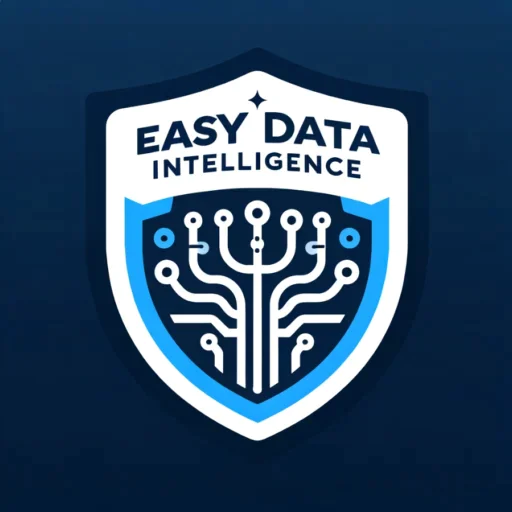Introduction: What is Web Scraping Google Maps?
Web scraping Google Maps allows businesses to extract business listings, reviews, contact details, and geographic data for marketing, competitor analysis, and market research.
Many companies and researchers rely on Google Maps scraping for:
✔ Lead generation – Extract business names, phone numbers, and websites
✔ Competitor analysis – Track reviews, ratings, and business locations
✔ Local SEO optimization – Analyze ranking factors in Google My Business
⚠ Note: Google Maps data is protected under Google’s Terms of Service. Ensure that your scraping methods comply with legal guidelines.
- Introduction: What is Web Scraping Google Maps?
- 1. What Data Can You Extract from Google Maps?
- 2. Best Methods for Web Scraping Google Maps
- 3. Common Use Cases of Google Maps Scraping
- 4. Challenges in Scraping Google Maps & How to Overcome Them
- 5. Legal Considerations: Is Scraping Google Maps Allowed?
- 6. Step-by-Step Guide: Scraping Google Maps with Python
- Final Thoughts: Should You Scrape Google Maps?
1. What Data Can You Extract from Google Maps?
When scraping Google Maps, businesses can collect:
- Business Name & Category (e.g., restaurants, hotels, real estate agencies)
- Address & Phone Number (contact details for lead generation)
- Website & Email (if available)
- Ratings & Reviews (customer feedback insights)
- Opening Hours & Location Coordinates (latitude & longitude for mapping applications)

📖 Further Reading: Google Maps Business Data
2. Best Methods for Web Scraping Google Maps
There are two primary methods for extracting data from Google Maps:
Method 1: Using Google Places API (Legal Approach)
📌 Best For: Developers needing structured and legal business data
How to Use Google Places API
- Get an API Key – Sign up at Google Cloud Console.
- Enable Places API – Activate Google Places API to access business data.
- Send Requests – Use Python or JavaScript to fetch data.
- Extract & Store Data – Save it in CSV, JSON, or a database.

Pros & Cons of Google Places API
| Pros | Cons |
|---|---|
| Legally compliant | Limited free usage (pricing applies) |
| Structured & reliable data | Requires API key setup |
| Easy integration with apps | Some fields may be restricted |
📖 Further Reading: Google Places API Documentation
Method 2: Web Scraping Google Maps Without API
📌 Best For: Users needing more extensive business details than the API allows
Steps for Scraping Google Maps Without API
- Use a headless browser (Selenium or Playwright) to interact with Google Maps.
- Extract business details using XPath or CSS selectors.
- Save data in CSV, JSON, or a database.
Best Tools for Scraping Google Maps
| Tool | Best For | Language |
|---|---|---|
| Selenium | JavaScript-heavy content | Python, JavaScript |
| Playwright | Fast, multi-browser scraping | Python, JavaScript |
| BeautifulSoup | Parsing static HTML | Python |
| Puppeteer | Automating Chrome interactions | JavaScript |
📖 Further Reading: Scraping Google Maps with Selenium
3. Common Use Cases of Google Maps Scraping
Lead Generation for Businesses
- Extract contact details of restaurants, hotels, and service providers.
- Build custom business directories for outreach.
Competitor Analysis for Local SEO
- Scrape competitor ratings, reviews, and keywords.
- Identify top-performing businesses in your niche.
Real Estate & Location Intelligence
- Extract property-related businesses like agents, contractors, and landlords.
- Analyze hotspots for new store locations.
Market Research & Customer Insights
- Track popular locations based on customer reviews.
- Identify emerging business trends by location.
📖 Further Reading: How Businesses Use Google Maps Data
4. Challenges in Scraping Google Maps & How to Overcome Them
| Challenge | Solution |
|---|---|
| Google Maps uses JavaScript for loading content | Use Selenium, Playwright, or Puppeteer |
| CAPTCHA and bot detection | Implement proxy rotation & human-like interactions |
| Google Terms of Service restrictions | Use Google Places API when possible |
| Data inconsistency in business listings | Use data cleaning techniques with Pandas |
📖 Further Reading: Avoiding Google’s Anti-Scraping Measures
5. Legal Considerations: Is Scraping Google Maps Allowed?
Google’s Terms of Service restrict web scraping of Google Maps without permission.
What You Can Do Legally:
✔ Use Google Places API for business data
✔ Extract publicly available data without violating terms
✔ Ensure compliance with GDPR & CCPA when handling personal data
What You Should Avoid:
❌ Scraping Google Maps directly without permission
❌ Collecting personal customer details
❌ Overloading Google’s servers with high request volumes
📖 Further Reading: Google Maps API Terms of Use
6. Step-by-Step Guide: Scraping Google Maps with Python
Prerequisites:
Install the required libraries:
bashCopyEditpip install selenium pandas
Code Example: Extracting Business Listings
pythonCopyEditfrom selenium import webdriver
from selenium.webdriver.common.by import By
import time
import pandas as pd
# Set up Selenium WebDriver
options = webdriver.ChromeOptions()
options.add_argument("--headless") # Run Chrome in headless mode
driver = webdriver.Chrome(options=options)
# Open Google Maps
driver.get("https://www.google.com/maps/search/restaurants+in+New+York")
time.sleep(5) # Wait for the page to load
# Extract business names
business_names = driver.find_elements(By.CLASS_NAME, "fontHeadlineSmall")
names = [name.text for name in business_names if name.text]
# Save to CSV
df = pd.DataFrame(names, columns=["Business Name"])
df.to_csv("google_maps_businesses.csv", index=False)
print("Scraping completed. Data saved!")
driver.quit()
📖 Further Reading: Selenium Web Scraping Guide
Final Thoughts: Should You Scrape Google Maps?
Web scraping Google Maps can provide valuable business insights, but it must be done responsibly.
✔ Use Google Places API for structured and legally accessible data.
✔ Use web scraping techniques carefully, respecting Google’s terms.
✔ Consider alternative sources like Yelp or OpenStreetMap for business data.
📩 Need professional web scraping solutions? Contact Easy Data for custom data extraction services.


Leave a Reply